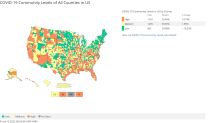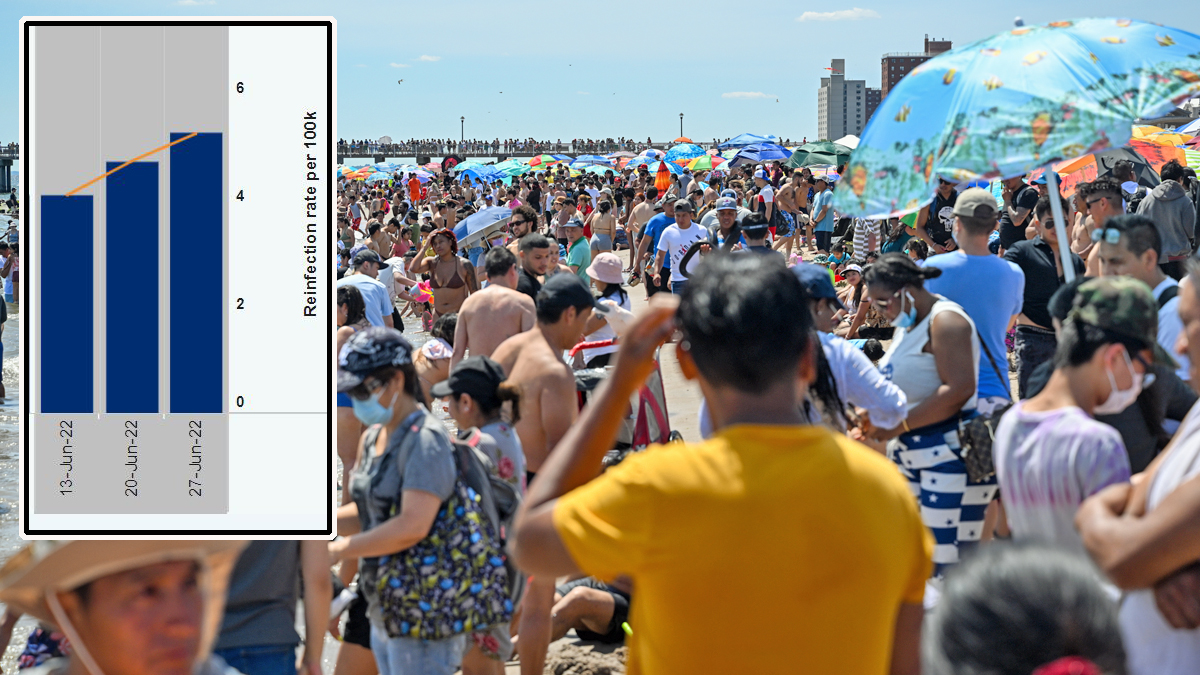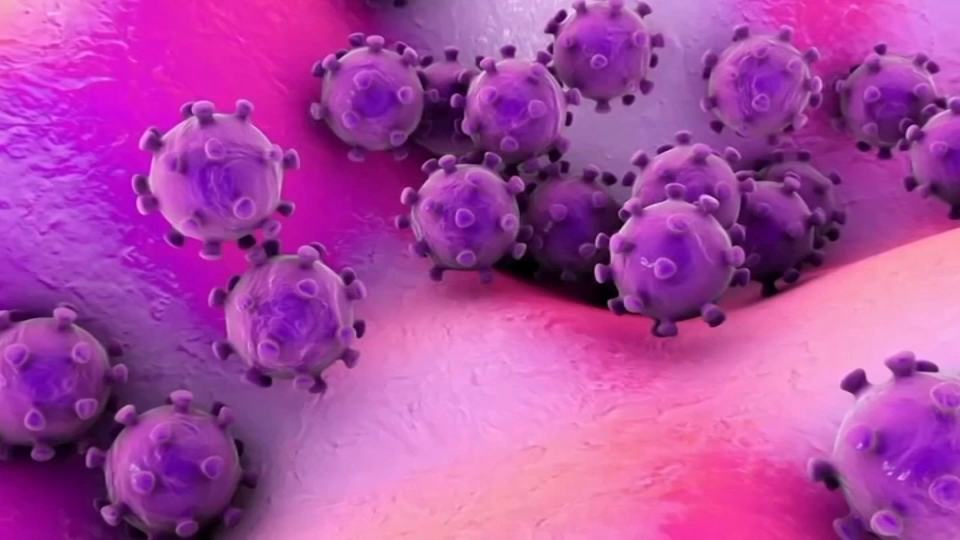What to Know
- COVID cases are surging across America once again, fueled in large part by the highly contagious and more vaccine-resistant omicron subvariants like BA.5. That strain is also linked to a higher risk of reinfection
- The number of U.S. counties the CDC says are at high risk for COVID spread grew by 71% over the last week, from 667 to 1,143. That includes all of NYC, Long Island and Westchester, Putnam and Rockland counties
- No new mask mandates have been implemented locally, but health officials in NYC say everyone should mask up indoors in public settings regardless of vaccination status with spread rates as high as they are now
What a difference a month makes. Unlike the last big COVID swing, though, this change is in the wrong direction.
The number of U.S. counties in the CDC's high-risk category for COVID spread soared 71% in just the last week, with 1,143 now meeting the thresholds for that top threat designation. The latest numbers mark a more-than-triple-fold increase in the last month, a clear reversal of progress as the so-called "worst version" of omicron yet strengthens its footing in America.
Just a quarter of the nation's counties are at low risk for COVID spread as of Friday. In the CDC's June 17 update, 60% were at low risk, including all five boroughs of New York City. The federal health agency's latest map reflects a transition that health officials have warned of for a few weeks and that New Yorkers have noticed, teeth gritted, as they brace once again.
Get Tri-state area news and weather forecasts to your inbox. Sign up for NBC New York newsletters.
Transmission rates in the five boroughs are up 33% in just the last week -- 45% on Staten Island. No corresponding increase in severe illness has accompanied this wave, fueled by omicron subvariant BA.5, which is why New York City is reevaluating its COVID alert system. But BA.5 has proven to be more likely to reinfect and evade vaccine protection, as well as being more transmissible, which is fanning fresh anxiety across the entire country and renewed pleas for COVID precautions.

Even Dr. Anthony Fauci, the nation's leading infectious disease expert, says it's smart to mask up in New York City right now. The latest state data shows the five boroughs have a rolling new case rate of 49.9 new daily cases per 100,000 residents. The last time that was the case was Jan. 31, 2022.
Where else in New York are masks advised? According to the CDC's benchmarking system, a high-risk designation means face coverings are recommended indoors for all people regardless of vaccination status. Westchester and Nassau counties were in the high-risk category last week and stayed there in Friday's update. They were joined by Putnam, Rockland and Suffolk counties, the latter of which was removed from the high-risk section two weeks ago only to land right back on it Friday.
New York City, where BA.5 accounts for at minimum 57% of COVID cases and likely far more, and Long Island, which has the second-highest rolling new case rate right now behind the city, also have the highest reinfection rates of the state's 10 regions. The hierarchy is reversed, though, with Long Island's rate of 7.3 reinfections per 100,000 residents topping New York City's rate of 5.9. That could change when the next weekly data set comes in, though.
More Coverage
Omicron subvariant BA.4 has similar attributes to BA.5, research shows, and the two account for at least three-quarters of cases in the city as of Friday.
Over in neighboring New Jersey, the latest wave is worsening, too. All but four Garden State counties -- Cumberland, Salem, Hunterdon and Mercer -- are now considered high-risk by the CDC. Two weeks ago it was the opposite. Only four of the state's 21 counties were considered high-risk in the early July update.
Connecticut held pat. The western part of the state -- Fairfield, Litchfield, New Haven, and Middlesex counties -- are still listed as medium-risk for COVID spread by the CDC, while the eastern four counties are at low risk in Friday's federal update.
What You Should Know About BA.5
COVID variant BA.5, an omicron descendant that evidence indicates to be more transmissible than earlier strains, also appears to be at least four times more vaccine-resistant, according to a new Columbia University study published this week.
BA.5, which accounted for more than 40% of all New York state positive COVID samples sequenced for variants in the latest two-week data set, and BA.4, were at least 4.2 times more vaccine-evasive than their predecessor, Columbia University research says.
It notes that subvariant BA.2.12.1, which fueled the May case and hospitalization surge that sent 87% of all New York state counties into the CDC's COVID high-risk territory, was found to be only 1.8 times more resistant. And just one therapeutic antibody authorized for clinical use retained full potency against those strains, the study says.
Reinfection rates across the Empire State have supported the research findings as of late. COVID breakthrough infections and hospitalizations across the state have risen as well, as the Columbia research would suggest, with the first up each of the last three weeks and the second up the last four. That timeframe reflects the rise of BA.4./BA.5.
Both rates, though, remain overwhelmingly below their January 2022 peaks.



